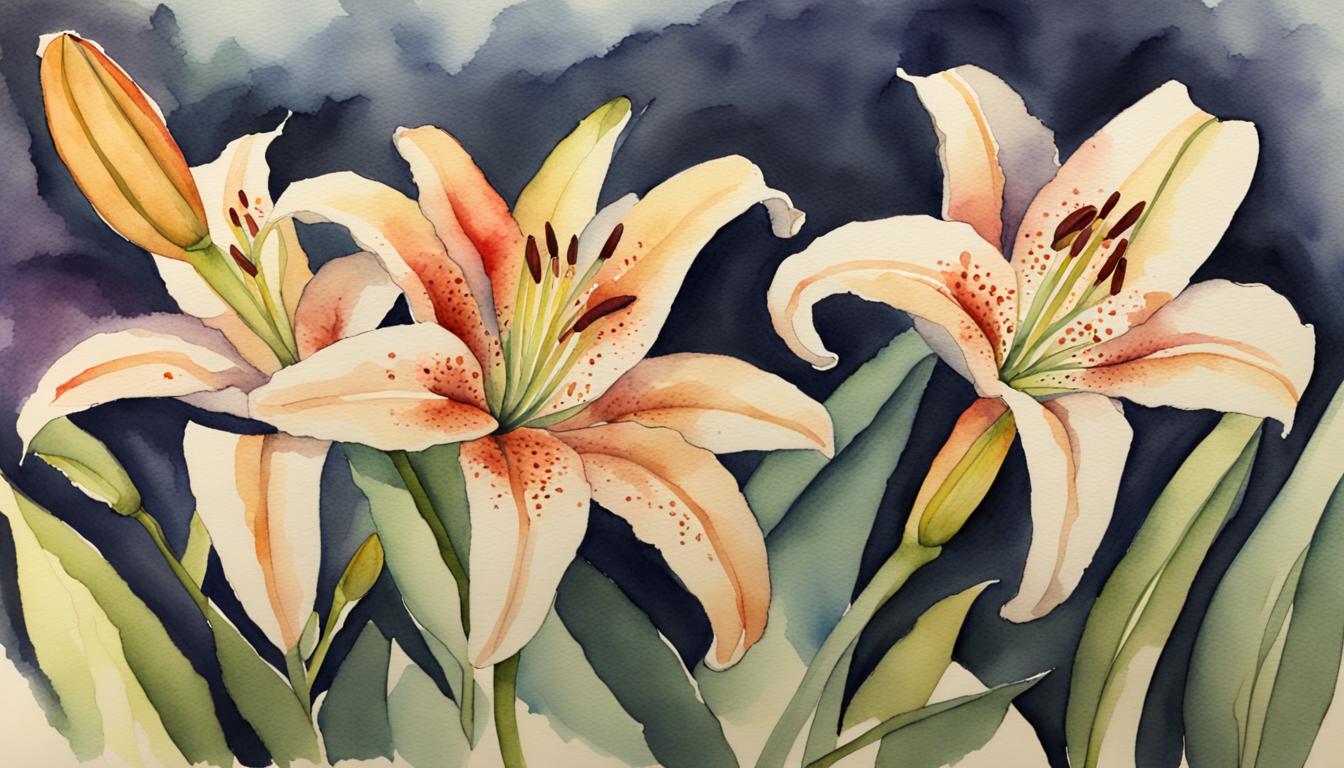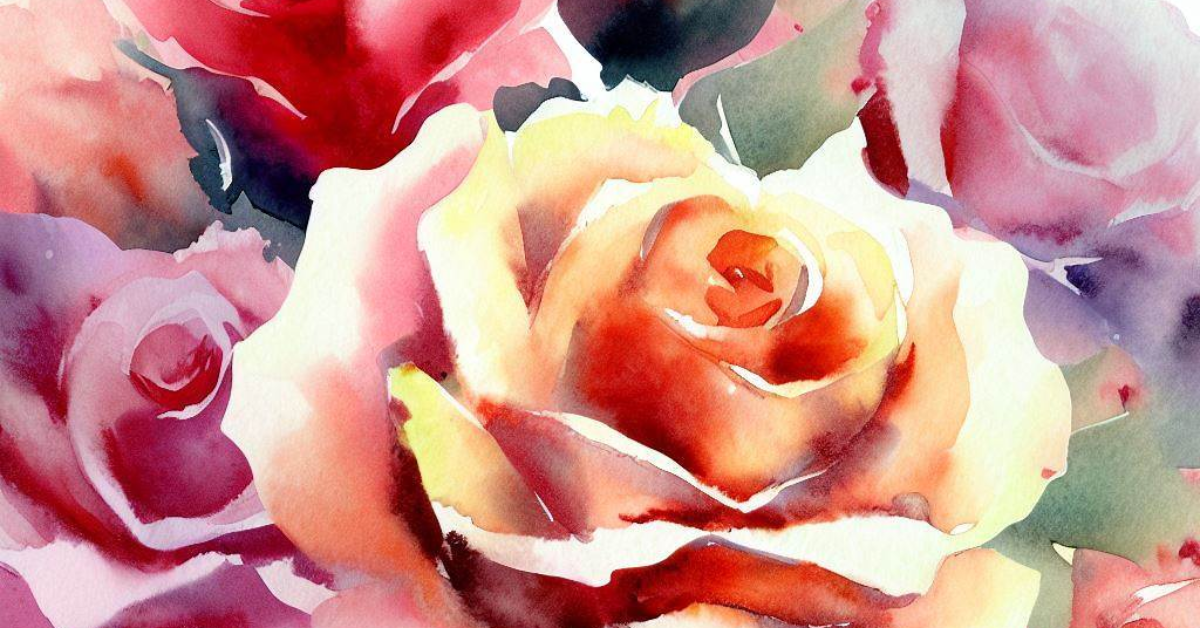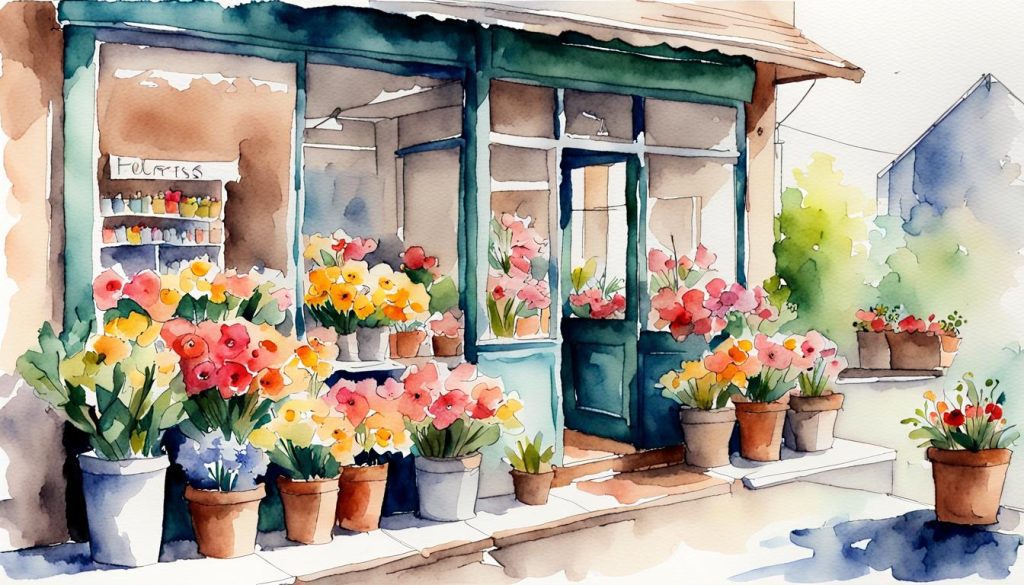
Watercolor painting is a wonderful creative outlet. For many artists, flowers are a go-to subject matter thanks to their natural beauty and variety of shapes, colors and textures. In this blog post, we will explore watercolor flowers through examples from other artists to provide inspiration as you work on your paintings.
Tips for Painting Different Types of Watercolor Flowers
There are so many beautiful flowers to choose from when working in watercolors. Here are some tips for a few common varieties:
| Flower | Tips |
|---|---|
| Roses | Keep washes loose and light for the soft petal edges. Saturate color in the bulbous centers. |
| Tulips | Keep washes loose and light for the soft petal edges. Really saturate color in the bulbous centers. |
| Daisies | Use a small brush for the intricate petals. Leave white of the paper for highlights. |
“Think about the basic shapes and tones – capture the essence rather than detail.”
Joe McLaren
Focus on flow, color mixing and expressiveness over perfection.
Inspiring Examples of Watercolor Flower Paintings
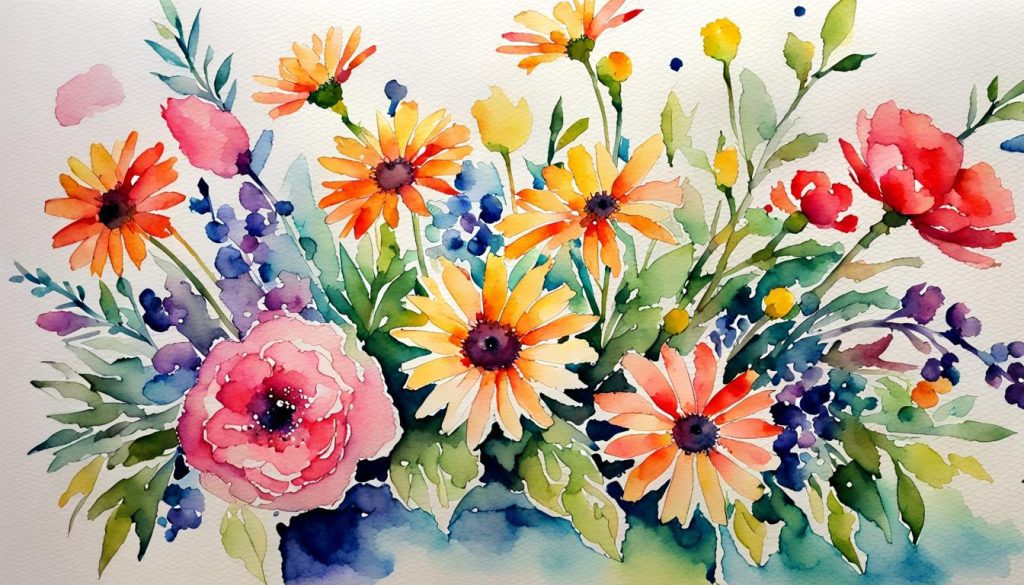
To get you inspired, here are some examples of beautiful watercolor flowers created by talented artists:
“A true work of art inspires, it lasts forever.”
– Unknown
- Watercolor Succulents by Yao Cheng, a Chinese-American artist who is known for her colorful and expressive style. She paints succulents with loose and fluid strokes, creating a sense of movement and vitality. She uses a variety of greens, blues, and purples to capture the diversity and beauty of these plants.
- Watercolor Cactus by Anna Mason, a British artist who is inspired by nature and wildlife. She paints cacti with amazing detail and texture, using multiple layers of watercolors and fine brushes. She creates contrast and depth by using dark and light colors, and adds subtle highlights and shadows to make the plants look three-dimensional
- Watercolor Plants by Helen Dealtry, a British artist who is based in New York. She paints ferns with delicate and graceful lines, using a limited palette of greens and browns. She creates a sense of harmony and balance by arranging the ferns in a symmetrical composition and adds some splashes of watercolors to create a soft and airy background
- Watercolor Orchids by Billy Showell, a British artist who is a member of the Society of Botanical Artists. She paints orchids with incredible realism and precision, using a wet-in-wet technique to create smooth and seamless transitions of colors. She captures the intricate details and shapes of the flowers and leaves, and adds some fine lines and dots to enhance the realism.
These are just a few examples to spark your imagination! Experimenting with different compositions, color palettes and techniques will help you develop your own artistic voice. Now let’s discuss some techniques you can try in your watercolor flower paintings.
Techniques for Watercolor Flower Paintings
Here are some techniques to explore in your watercolor flower paintings:
- Wet-on-wet washing: Layering wet color on wet paper for soft, blended edges. Great for flower backgrounds, leaves, and distant blooms.
- Dry brushing: Adding texture by brushing dry pigment onto Wet or dry paper. Effective for foliage, ragged petal edges.
- Color washing: Saturating paper with diluted pigment and letting colors mingle and flow. Produces ethereal blooms and atmospheric scenes.
- Reserved whites: Leaving areas of untouched white paper to depict highlights, centers of flowers.
- Glazing: Applying successive thin layers of semi-transparent color to deepen hue and portray rounded forms.
Experiment and have fun! Don’t be afraid to make bold color choices or loose expressive strokes. The meditative process of painting flowers with watercolors can transport you to a place of calm and creativity.
Still need inspiration? Here are some more tips and ideas!
- Look at real plants or photos of plants. Observe the shapes, colors, textures, and details of different plants. You can also sketch or trace them to get a feel for their forms. Try to find plants that appeal to you or match your mood.
- Look at other artists’ paintings of plants. You can learn a lot from studying how other watercolor artists use the medium to create botanical art. You can also get inspired by their styles, techniques, and compositions. Some watercolor artists that you can check out are Angela Mckay, Anna Mason, Billy Showell, Irene Meniconi, and Isabel Mischka.
- Experiment with different colors, techniques, and styles. Watercolor is a versatile and expressive medium that allows you to create various effects and moods. You can use bright or muted colors, wet or dry brushes, loose or detailed strokes, realistic or abstract shapes, and more. You can also mix watercolor with other media, such as pen, ink, or gouache. The possibilities are endless!
- Try different types of plants, such as flowers, leaves, succulents, herbs, fruits, or vegetables. You can also mix and match different plants to create a bouquet, a wreath, a terrarium, or a garden. You can also paint plants that are seasonal, symbolic, or meaningful to you.
- Use a limited palette or a color scheme to create harmony and contrast in your painting. You can choose colors that are complementary, analogous, monochromatic, or triadic. You can also use warm or cool colors, light or dark colors, or neutral or vibrant colors. You can also create your own custom colors by mixing watercolors or using other media.
- Use different watercolor techniques to create texture and depth in your painting. You can use wet-on-wet, wet-on-dry, dry-on-dry, or dry-on-wet techniques to create different effects. You can also use salt, plastic wrap, masking fluid, or other materials to create interesting patterns and shapes. You can also use a sponge, a toothbrush, a spray bottle, or other tools to create splatters, dots, or streaks.
- Add details and embellishments to your painting to make it more realistic and attractive. You can use a fine brush, a pen, or a marker to add outlines, veins, spots, or shadows to your plants. You can also add highlights, glitters, or metallic paints to make your plants sparkle and shine. You can also add backgrounds, borders, or lettering to your painting to make it more complete and expressive.
In Conclusion
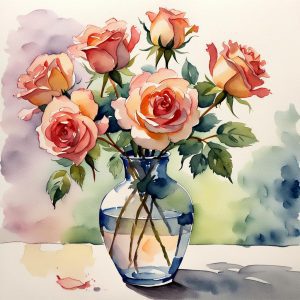
In this post, we explored watercolor flower inspiration through examples, techniques, tips and key principles. Remember to focus on flow, color mixtures, and capturing the spirit rather than the detail of the floral subject. Revisiting galleries and renditions by masters will continue fueling your creative growth. Most of all, enjoy the relaxing process of painting with watercolors – soon your works will beautifully showcase your talent and passion for watercolor flowers.
